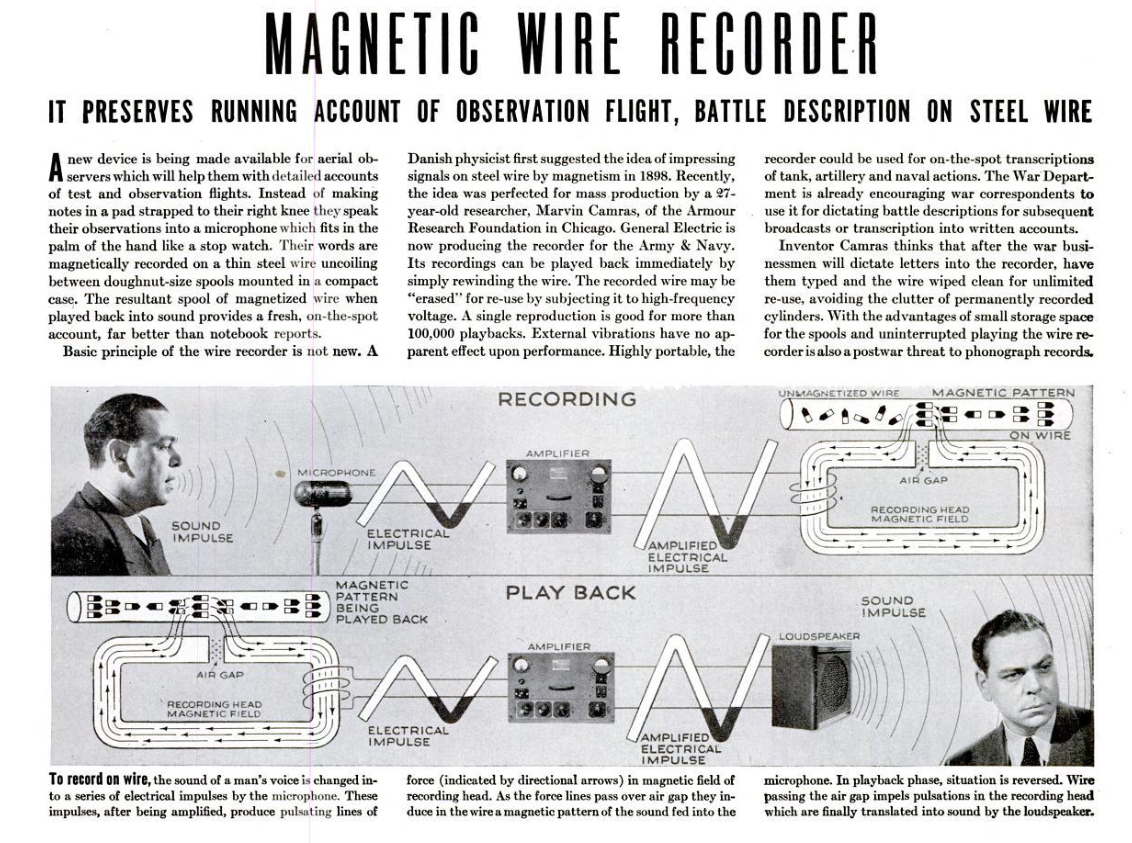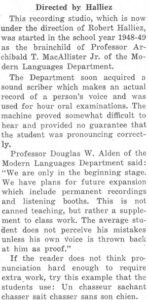Introduction:
Magnetic wire recording is a technology that leverages the magnetic properties of steel wire to record sound. It was initially conceptualized by Oberlin Smith, an American inventor, in 1878 and later constructed as a telegraphone by Danish inventor Vladmir Poulsen in 1898. The telegraphone captures sound by impressing the audio pattern onto a ferromagnetic material using the magnetic field generated by the recording head. The recording can then be replayed by using the playback head to read the impressed pattern. Magnetic recording has been the foundation for many technologies we have today, including the ability to store memory on computer disks. Our replica hopes to reproduce the two fundamental abilities of the wire recorder: storing a sound on a wire and playing a sound using a magnetized wire .This replica was built with two spools: one to feed the wire for recording and another to collect the wire. The replica also has additional mechanisms to maintain consistent and automatic feeding. We have also studied the hysteresis graphs of different materials to analyze their magnetic properties and build a recording/playback head with magnet wire and ferrite beads that have the ability to generate a magnetic field pattern of the auditory input. Magnetic storage technology was a key part of the computer revolution of the 1940s and 50s as it provided cheap and reliable storage that allowed computers to reach the edge of their potential. The IAS machine built at Princeton, which was one of the first implementations of the famous von Neumann architecture, utilizes magnetic core memory as a secondary storage in the first implementation and as a primary storage in later implementations. This work paved the way for the efficiency of modern computers.
Basics of Wire Recorder:

Manuals:
The following links are to hobbyist manuals for building wire recorders from scratch.
Quartermaine Manual
Judge Recorder Manual
Science Buddy Manual
Adverts:
This roll of images show how the role of wire recorders has changed over time. When it was first conceptualized it was primarily only viable for military and academic purposes due to poor advertising and the high cost. However, as the technology advanced wire recorders became more a part of the life of the general public, a shift which started in the 1940s.
Hysteresis Graph:
Here is a hysteresis graph (also known as a BH curve) showing the effects of an oscillating magnetic field on pure iron (Blue), steel (Green), and free space (Red).

The x axis describes the magnitude of the applied magnetic field (Given through the voltage applied to an electromagnet) as it oscillates. The y axis describes the strength of the resultant magnetic field of the substance.
We can see from the curve for Iron that when the applied field is zero, the resultant field is also zero, regardless of how strong the field was previously.
With steel, we see something strange. Unlike Iron, the curve “Opens up,” and the resultant field is non-zero even when the applied field is zero.
Since steel is the only one that can be permanently magnetized we see a remaining magnetic field (called a remnant) when the applied field’s force drops to zero. This is why steel wire was used in Poulson’s patent: because it was able to “Store” its magnetic field.



